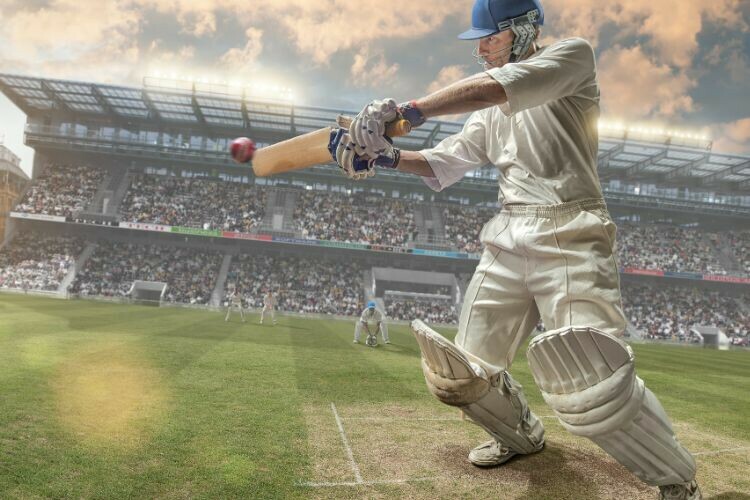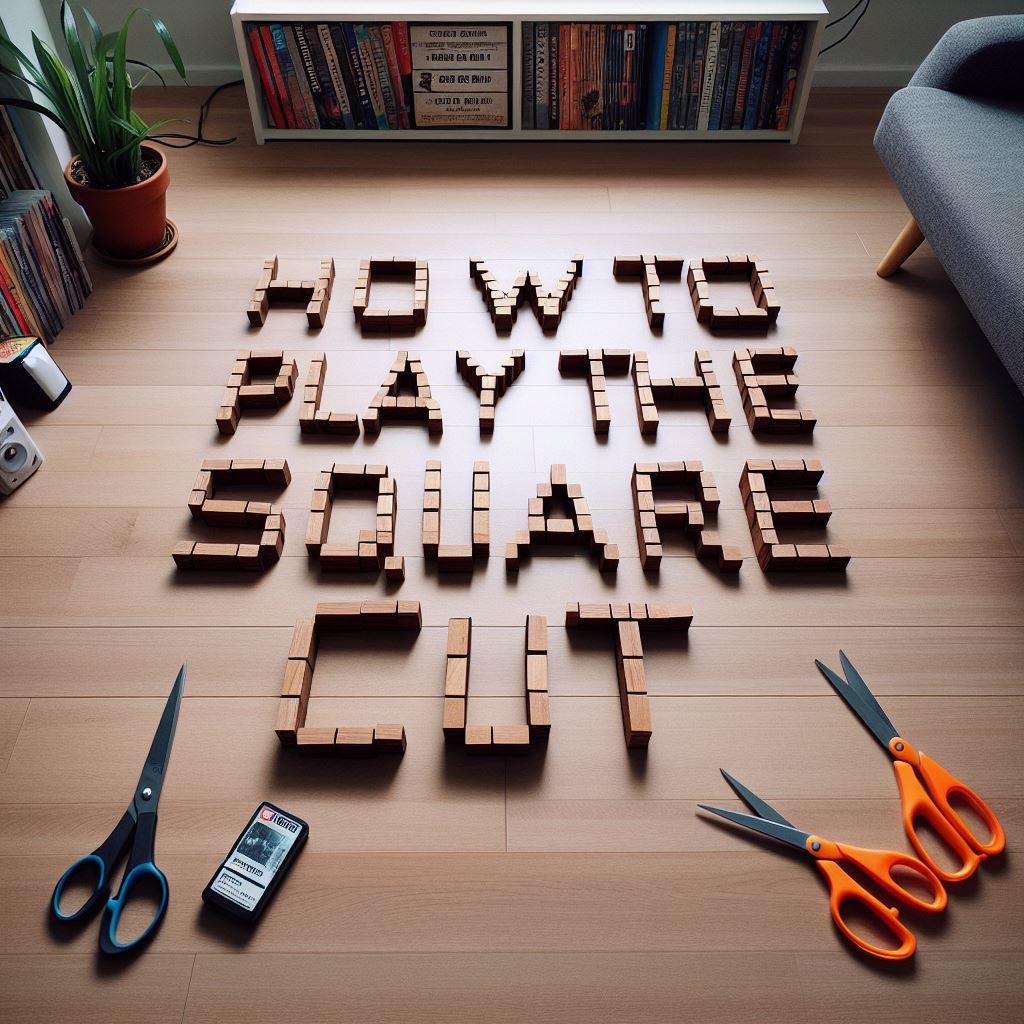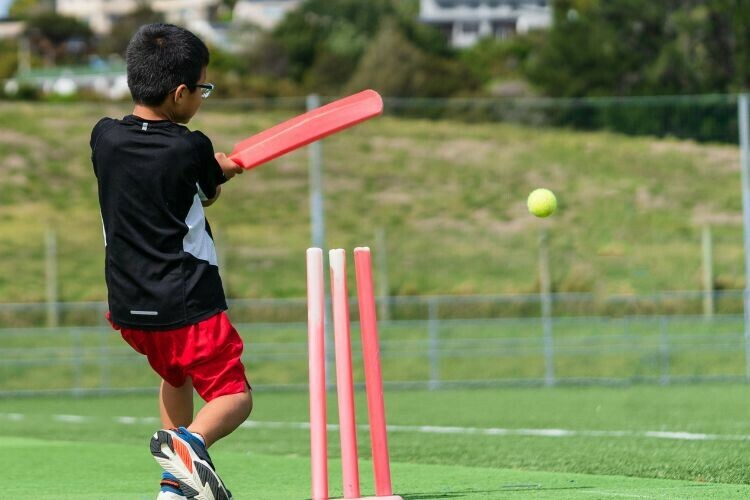The square cut is one of the most exhilarating and classic shots a cricket batter can play. Perfected by legendary batters over the decades, the square cut is executed against short-pitched deliveries that are wide of off stump.
This allows the batter to effectively utilize the width provided by the bowler safely to score runs aggressively through the offside.
To truly understand the square cut, you need to recognize its place in amongst all the other shots at your disposal. Traditionally, it has been a shot that exemplifies control, timing and precision.
Unlike the brute force required in the pull or hook shots, the square cut relies on your ability to react quickly and get into position to exploit width offered by the bowler.
The beauty of a well-executed square cut lies in its crisp contact; you know you’ve hit the shot well by the satisfying crack it makes off the bat, not to mention the slam of the ball against the boundary fence if you’ve managed to place it away from fielders.
Understanding the Square Cut
The square cut is a powerful shot hit with a horizontal bat to a ball short and wide of off stump. As opposed to a square drive, the square cut is performed against a ball usually above waist level.
The square cut serves multiple purposes in today’s cricket matches. It is an excellent shot for punishing poor deliveries and exploiting gaps in the offside field. In longer formats of the game, where batting can often be a waiting game where a batter waits for the bad ball, the square cut is one of the main shots you use against that bad ball.
In shorter formats of the game, when the run rate is crucial, the square cut can all you, as the batter, to keep your high strike rate going with minimal risks, as the shot is typically played to balls that are wide and deserving of punishment.
Added to that, because the square cut is usually used to deal with a bad ball, using it and seeing the ball streak to the fence, drives home the fact, to the bowler, that he has no safety net when it comes to bowling bad balls. He knows that a bad ball will be sent to the boundary, and this gets into his mind, putting pressure on his line and length.
The success of the square cut hinges significantly on your footwork and timing. As do all shots, of course.
Proper footwork is essential as it allows you to get into an optimal position to play the shot. Usually, this will involve a quick, lateral, possibly slightly diagonally backwards, movement to where the ball will be. You need to position your body in a way that your bat can swing freely through the desire point of contact.
Your feet should be positioned wide enough to offer balance and leverage, but also allow for a rapid adjustment in case the ball behaves different to what you expect when it bounces from the pitch.
Obviously, timing is crucial. You must judge the pace and the bounce of the ball accurately, making contact at the precise moment to utilize the ball’s speed.
Judging the height of the ball is really important. Because the square cut is a horizontal shot, you only need the ball to bounce just a little bit more, half the width of the bat, before it becomes a top edge through to the keeper, or a bottom edge on to your stumps.
The goal of the square cut is to hit it late, just as it passes beside or slightly behind your body. This maximizes control and placement, enabling you to steer the ball past the fielders with precision. Because the greatest square cut that goes straight to the fielder is just as useful as missing the ball entirely.
To really master the square cut, requires a blend of proactive footwork, sharp hand-eye coordination and the mental acuity to read the game’s situation. We’ll go into a little more depth in the next section.
Perfecting the Square Cut

Mastering the square cut involves a combination of having the correct grip, stance, body alignment and bat movement. Each element plays a crucial role in ensuring the shot is both powerful and precise.
Grip and Stance: When preparing to play the cut shot, your grip on the bat handle should be firm but relaxed. This shot needs great wrist work to allow you to get the ball to the ground and away from a fielder, and holding the bat handle to tightly limits your ability to do that.
So, hold the bat with the top hand gripping it tightly near the top of the handle, and hold the lower hand slightly looser. Your legs should be shoulder wide to aid in balance and stability. Bend your knees a little bit; this allows you to move quickly in position, and have your weight distributed evenly, or if you are normally back-foot dominant, you can be slightly leaning towards the back foot.
Body Alignment: As the bowler comes to deliver the ball, keep your eyes level and your head still. You want to pick up the line and length of the ball as quickly as possible, and a moving head takes times away from you that you don’t have. Having your body slightly closed off, that is, with your shoulders only very slightly aligned towards the point region, will help prepare you for the square cut, but be warned, that same alignment might make other shots, like some leg side shots, more difficult.
Foot movement and Weight Distribution: When you see that the ball is short, your first movement should be on to your back foot. Depending on the width of the ball, this might also require a diagonal movement backwards, to allow you to get closer to the ball.
Back Lift and Bat swing: The back lift for the square cut is high, but controlled, with the bat lifted towards first or second slip. This allows for a sharp, angular downward swing. Your bat should then swing through the line of the ball, making contact with the ball near your eyeline. The swing should be quick and crisp, cutting the ball late to utilize its pace, and at the time of impact, roll your wrists and direct it square or behind point.
Drills to Master the Square Cut
To master the square cut, like any other shot in the game of cricket, requires consistent practice and fine-tuning of your technique. You can use the following drills to help you become proficient in executing the square cut effectively, making it a formidable part of your batting arsenal.
Solo Drills:
Solo drills are essential for focusing on the individual aspects of the square cut. One effective drill is the ‘shadow batting exercise’, where you practice the square cut motion without a ball. This helps in perfecting the stance, backlift, foot movements, bat swing and follow thing.
And yeah, we’ve mentioned this exercise in a number of our blog posts, but that’s because it is effective. It builds muscle memory, and that will help you in the middle because it is one less thing for you to have to think about in the split second it takes for the ball to get to you.
For a more active engagement, yet still technically ‘solo’, suspend a ball from a string so that it swings at the height and line conducive to practice square cuts. The repetitiveness of hitting a stationary target will allow you to adjust and perfect your swing and body alignment with each strike.
You can also use a rebound net. You throw a ball against the net; this returns the ball at various angles and speeds. This can not only aid in honing your reflexes, but also help in mastering your timing and placement of the shot under different conditions.
Partner Drills:
These are crucial for developing timing and coordination, as they simulate a more interactive practice environment. You simply have someone throwing the ball short and wide to you, balls that are conducive to the square cut. Your partner can throw the ball at different speeds and different lengths, to allow you to adapt your shot to those different variables.
Simulation Drills for In Game Scenarios:
Simulation drills incorporate elements of match conditions to prepare you for actual games. In this situation, you might have a scenario where fielders (of the alive or cardboard cutout variety) are placed in positions typical for a square cut. Then the bowler, or the person fielding the bowling machine, will deliver the balls to mimic bowling that would typically be cut. In this situation, not only do you have the be able to play the shot correctly, you need to be able to place the ball so that it avoids the fielders.
You can even incorporate a points system; if the ball goes to the fielder, it’s no points, because it was fielded. If the balls goes close to a fielder (particularly if you are using a cardboard cutout), that also might be 0 points, because it would be likely that it would have been fielded.
But a ball that evades the fielders can be given points based on the likelihood it would have reached the boundary. It just adds a bit of a competitive element to the drill.
Refining Your Square Cut: Mistakes and Improvements
The square cut is an important shot to master, but it can be tricky to get right. It takes time, it takes practice, and sometimes it takes doing it wrong to know how to then do it right. Here are some common mistakes you might make and how you can best learn to remedy them.
Timing Mistakes Related to Footwork
Timing issues often stem from incorrect or sloppy footwork. A well timed shot needs to be hit from the middle of the bat, but to get the middle of the bat to where the ball is requires swift, decisive and accurate foot movement.
First, focus on your initial movement towards the ball. It might seem strange to say ‘towards’ the ball, when the square cut is usually a back foot shot, but we mean towards where the ball will be when you hit it.
This is usually a quick movement backwards, with perhaps a movement sideways incorporated in the same movement. It needs to be quick, it needs to be steady, and you need to be balanced again when the time comes to hit the ball.
Over-Hitting or Under-Hitting the Ball
Over-hitting or under-hitting the ball occurs due to poor control over your swing’s power. To address this, practice moderating the bat’s swing by controlling the backlift. A higher backlight typically generates more power, but it can lead to loss of control. Different pitch types and delivery speeds require different types of backlift.
Fast pitches, or pace bowling, might require a smaller backlift, as you can use the pace of the ball to generate the speed off the bat. However, slow pitches or spin bowler, require you to make more of the power yourself, so this situation might require a bigger backlift.
Developing Patience
Not every delivery wide of off stump should be cut. Sometimes the circumstance of the game doesn’t allow it; sometimes the field set by the opposing captain makes the shot risky; sometimes the pitch itself is not conducive to the shot. You need to develop patience and recognize the best scenarios to perform the cut shot.
Last Word On The Cut Shot
The Cut Shot is a great shot to include in your cricketing repertoire. It allows you to cash in on the bad balls, particularly if you’ve had to fight hard to keep out the good balls. It requires patience and practice and the ability to correctly determine the width and the bounce of the ball, and the skill to strike the ball true and to guide it away from fielders.
Hopefully you enjoyed that post and it helps you to play the cut shot with more confidence and authority. Who’s the best exponent of the cut shot you’ve ever seen. Comment below and let’s get a conversation going.
And come back soon to read the next post in this series, How to Play the Pull Shot.


